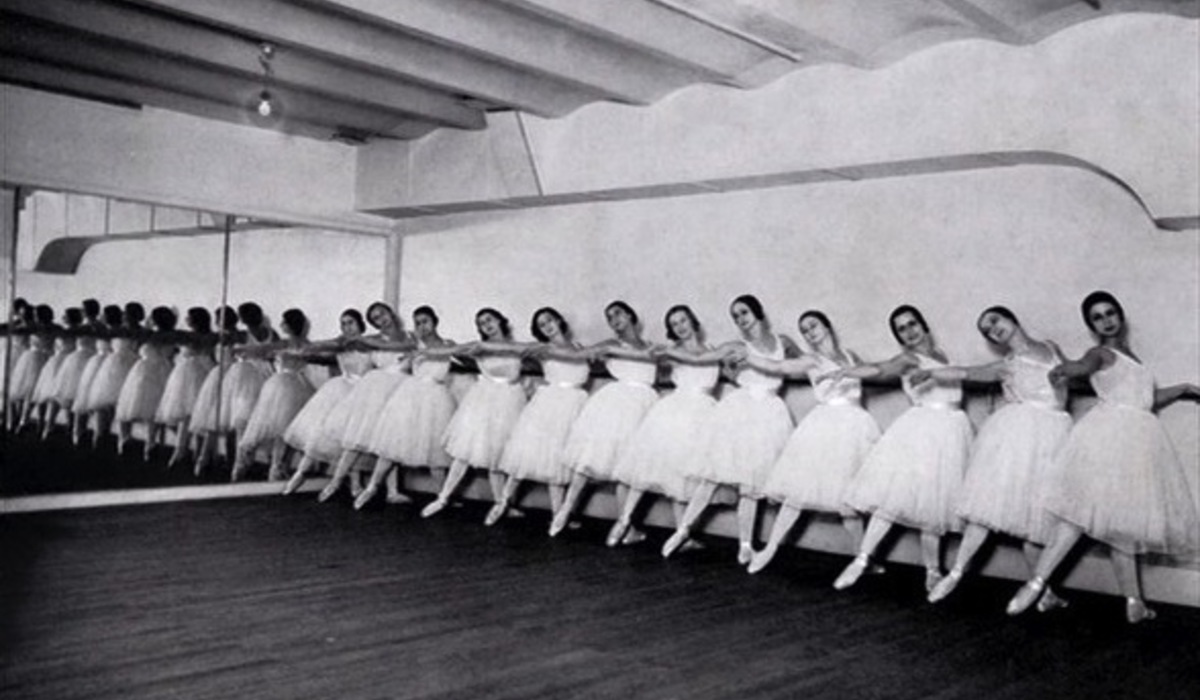By Chlotrudis Independent Film Society
Rating: 3.75 cats
Director: Daniel Geller | Dayna Goldfine

Country: united_states
Year: 2005
Running time: 118
IMDB: http://www.imdb.com/title/tt0436095/combined
Michael says: “BALLETS RUSSES does for ballet what BROADWAY: THE GOLDEN YEARS did for Broadway. The film documents the history of the Ballet Russes, the ballet company (and its offshoot) that defines ballet today through archival footage and interviews with members of the company who are still alive, many in their 80’s. The company was formed with the dancers who had fled Russia to France after the Revolution, the picked up more members as they toured the globe. It was delightful to spend some time with the dancers today, with their larger-than-life personalities. What a delightful surprise to see Yvonne Craig (TV’s Batgirl) as a member of the company in the early 1960’s. For someone who knew very little about the history of ballet, BALLETS RUSSES provides an entertaining and illuminating background. 3 cats”
Bruce says: “In 1911 Sergei Diaghliev founded the Ballets Russes in Paris. While Diaghliev and his most famous dancer Vaslav Nijinsky were decidedly Russian, Ballets Russes never performed in Russia. Without Diaghliev, we would not have ballet as we know it today, for he revitalized a dying art. Diaghliev changed ballet conceptually through associations with visual artists such as Matisse, Picasso and Baskt and composers Stravinsky, Debussy, Ravel, Satie and Prokofiev. Rather than presenting one long ballet per evening, Diaghliev often mixed shorter ballets on a single program. In 1929, the magic bubble burst – Diaghliev died suddenly and his troupe, forever plagued with financial woes, dissolved.
“Several years later two competing ballet troupes, founded by René Blum (Ballet Russe Du Monte Carlo) and Colonel Vassili de Basil (Original Ballet Russe), emerged and remained arch competitors for many years. They began as a single troupe but de Basil was difficult to deal with and Blum left him taking Leonide Massine the lead choreographer. BALLETS RUSSES is the story of these two troupes. Both troupes had their origins in Monte Carlo but ultimately settled in New York thanks to Sol Hurok and World War II. We learn how George Balanchine began his career in Paris and ended up as the preeminent figure in the ballet world; and how Massine created 113 ballets within a few years, then lost his rights to them when he joined Blum’s company rather than that of de Basil. Balanchine also began the tradition of training pre-teen girls. One of his most noted successes was the three Baby Ballerinas who began performing in their early teens.
“While narrator Marian Seldes gives the audience an intense history lesson in ballet lore, BALLETS RUSSES also is a joyous celebration of dance as related by the dancers themselves. While the impresarios and choreographers are long gone (Blum died in Auschwitz), filmmakers Daniel Geller and Dayna Goldfine were lucky enough to capture scintillating interviews with many of the original dancers, some of whom died before the film was released. The dancers’ enthusiasm and love for their trade is truly infectious. The principal dancers are still beautiful and handsome in their twilight years. The women in particular are interviewed in settings (presumably their homes) which are often decorated in rich reds and golds reminiscent of the imperialist Russia they never knew. It is bizarre to see Wakefield Poole turn up since he is now almost as famous for directing the porno film BOYS IN THE SAND as he is for his contribution to dance.
“Also fascinating is the interrelationship between classical dance, film musicals and the Broadway stage. All of have made a tremendous impact on Western culture. Had there never been a Diaghliev, our world would possibly be a very different place. Even a lukewarm dance fan such as me is bound to leave this film elated. 4.5 cats”
